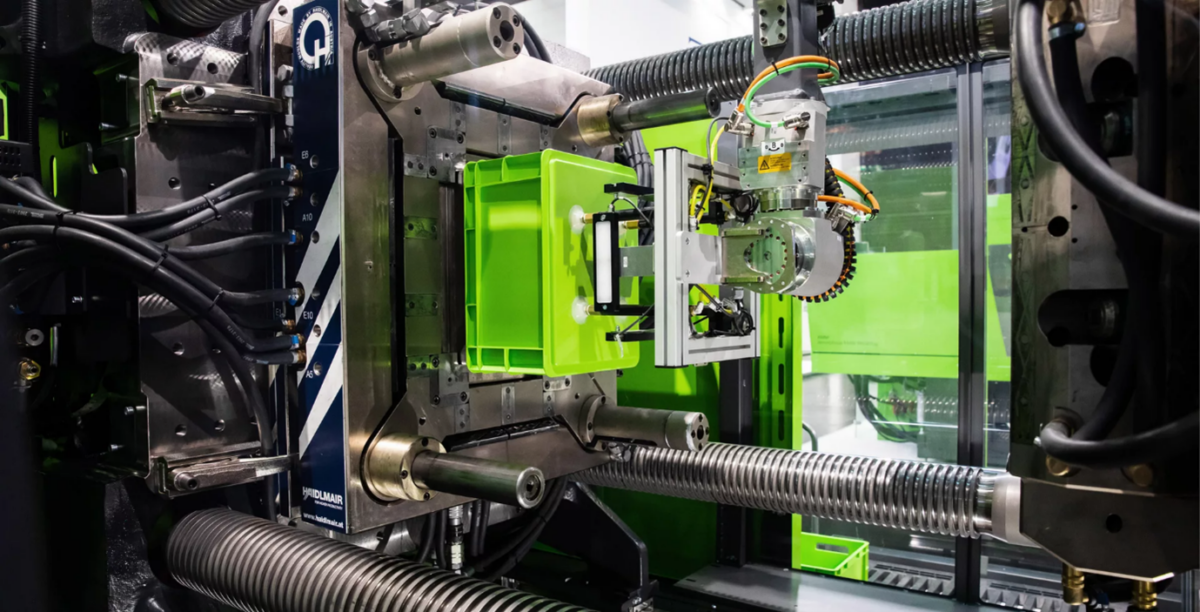Sandwich Injection Molding to Increase Post-Consumer Recycled Content

Engel developed a technology that allows the production of parts with recycled plastic (PCR) at their core and virgin plastic at the skin.
Brands and retailers have made ambitious commitments and goals to include Post-Consumer Recycled content (PCR) in their products despite the technical challenges that come with it.
This is why injection molding machine manufacturer Engel has developed a technology that allows the production of parts with PCR at their core and virgin plastic at the shell.
You can also read Industry 4.0 in Injection Molding.
Increasing Post Consumer Recycled (PCR) Content
In contrast to conventional coinjection, ENGEL’s skin melt process brings the two melts together even before injection.
The secret is a second plasticizing unit responsible for the skin material. It is located at an acute angle above the horizontal injection unit where the reyclate is melted.
The virgin material (the skin material) reaches the cavity first, then the recycled plastic (PCR) flows in and displaces it. This results in a recycled material core while the virgin material is at the wall.
The amount of recycled material depends on the geometry of the molded part and the filling pattern of the cavity. The injection position plays a major role, as does the viscosity ratio of the skin and core material.
Processing of plastics with the sandwich injection molding method can help manufacturers add up to 50 % recycled material to their products with:
- High surface quality.
- No switch-over marks on the part.
Example From the Logistics Industry
Transport boxes from the logistics industry tested this technology. Interestingly, the skin melt boxes’ force-displacement curves and compression values were similar to the boxes consisting of virgin material.
Finally, this opens new opportunities for manufacturers to play with the recycled content and processing parameters to get quality products. Definitely, sandwich injection molding can make an important contribution to the circular economy.

